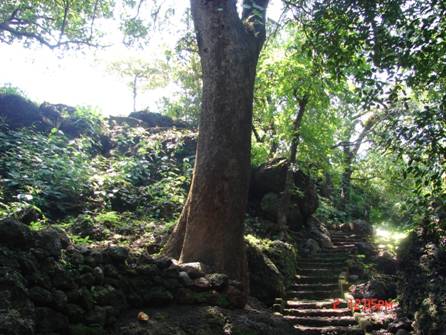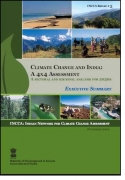/regions/western-hills
Western Hills
The economic impact of forest hydrological services on local communities - A case study from the western ghats of India by South Asian Network for Development and Environmental Economics (SANDEE)
Posted on 16 Jun, 2011 03:38 PMThe paper informs that the conventional wisdom that ‘more forest is always better’ has dominated policy making in the management of forested watersheds. In the context of the supposed hydrological regulation service provided by forest ecosystems, however, hydrologists have debated this assumption for more than two decades.
Taking action in India on downstream impact of dams - Report of the workshop held by International Rivers and Save Western Ghats Movement at Jog Falls, Karnataka in May 2011
Posted on 14 Jun, 2011 05:17 PM Jog falls in Western Ghats
Jog falls in Western Ghats
These dams have had a profound negative impact on communities and ecology upstream and downstream. While promised benefits of these dams (irrigation, hydro-power or flood control) have been overstated, numerous interrelated and complex negative impacts have simply not been studied or documented. Nonetheless, communities and ecosystems continue paying huge prices of these impacts.
Mapping ecologically sensitive, significant and salient areas of Western Ghats: Proposed protocols and methodology by Western Ghats Ecology Expert Panel of the MoEF - An article from Current Science
Posted on 02 Feb, 2011 08:11 PMThe Western Ghats Ecology Expert Panel (WGEEP) of the Ministry of Environment and Forests, Government of India (GOI) had been asked to identify ESAs along the Western Ghats, and to suggest how to manage them. The concept of ESAs has been extensively discussed in the literature. Several ESAs have been set up in India over the last 22 years under the Environment Protection Act, 1986, and a GOI committee under the chairmanship of Pranob Sen has proposed certain criteria for identification of ESAs.
A report on Save Western Ghats Meet held at Moodbidri, Mangalore between 27th -30th January 2011
Posted on 02 Feb, 2011 03:11 PM
Summary report - Maharashtra government consultation on Ratnagiri and Sindhudurg districts - MoEF
Posted on 31 Jan, 2011 12:12 AMContent Courtesy: Ministry of Environment and Forests, Government of India
Author: Madhav Gadgil
In view of the environmental sensitivity and ecological significance of the Western Ghats region and the complex nature of its geography, as well as the possible impacts of climate change on this region, the Ministry of Environment & Forests, Government of India constituted a Western Ghats Ecology Expert Panel to assess the current status of ecology of the Western Ghats region. The panel aimed at identifying ecologically sensitive areas in the Western Ghat region and making recommendations for the conservation, protection and rejuvenation of the region. This report presents a brief summary of the key issues that were dwelt on to understand the situation of the Western ghats and the key findings of the evaluation.
Sustainable water management initiatives in Konkan under threat - A report
Posted on 21 Jan, 2011 02:09 PMGuest Post by: Parineeta Dandekar
At the first sight, Daarche Paani (‘water at the doors’) appears unreal.. on a small flat plateau called ‘Sadaa’ in konkan, an elegant cobbled walkway leads a puzzled visitor to stairs carved in stone, which go down to an ancient grove, and here is an intricate system of tanks, channels and falls which supplies water to the Panderi village and goes down as a free flowing stream, to irrigate a plantation of arecanut, pepper and mangoes in a village called Gudaghe. When I visited the place, I could see three eminent visitors, a silent lady washing her load of clothes, a fairy bluebird splashing at a tank and a huge moonmoth in one of the trees.
 Stone walkway and ancient mango trees leading to Daarche Paani.
Stone walkway and ancient mango trees leading to Daarche Paani.
Photo: Parineeta Dandekar
Climate change and India - A sectoral and regional analysis for 2030s by the Indian Network for Climate Change Assessment (INCCA)
Posted on 05 Dec, 2010 10:45 AM This report prepared by the Indian Network for Climate Change Assessment (INCCA) provides an assessment of impact of climate change in 2030s on four key sectors of the Indian economy, namely agriculture, water, natural ecosystems & biodiversity and health in four climate sensitive regions of India, namely the Himalayan region, the Western Ghats, the Coastal Area and the North-East Region. This is the for the first time that such a comprehensive, long term assessment has been undertaken based on rigorous scientific analysis for the 2030s (all previous assessments were for the 2070s and beyond).
This report prepared by the Indian Network for Climate Change Assessment (INCCA) provides an assessment of impact of climate change in 2030s on four key sectors of the Indian economy, namely agriculture, water, natural ecosystems & biodiversity and health in four climate sensitive regions of India, namely the Himalayan region, the Western Ghats, the Coastal Area and the North-East Region. This is the for the first time that such a comprehensive, long term assessment has been undertaken based on rigorous scientific analysis for the 2030s (all previous assessments were for the 2070s and beyond).
Inviting public opinion on Western Ghats ecology - Ministry of Environment and Forests (Government of India)
Posted on 22 Aug, 2010 01:41 PM
How would we judge ecological sensitivity? Scientists view an ecologically sensitive area as an area whose ecological balance, once disturbed, is very hard to restore. Thus, steep Western slopes of Western Ghats, subject to heavy rains and winds, if deforested, are likely to be quickly stripped of soil cover and for ever lose their pristine vegetation. We do have a scientific understanding of the environmental attributes that render areas more sensitive; we also have insights into processes that have resulted in irreversible ecological damage.
Impact of climate change in India: An agro - ecological zone level analysis
Posted on 20 Aug, 2009 06:04 PMIndia is gifted with heterogeneous landforms and variety of climatic conditions such as the lofty mountains, the raverine deltas, high altitude forests, peninsular plateaus, variety of geological formations endowed with temperature varying from arctic cold to equatorial hot, and rainfall from extreme aridity with a few cms (<10 cm) to pre humid with world's maxim

